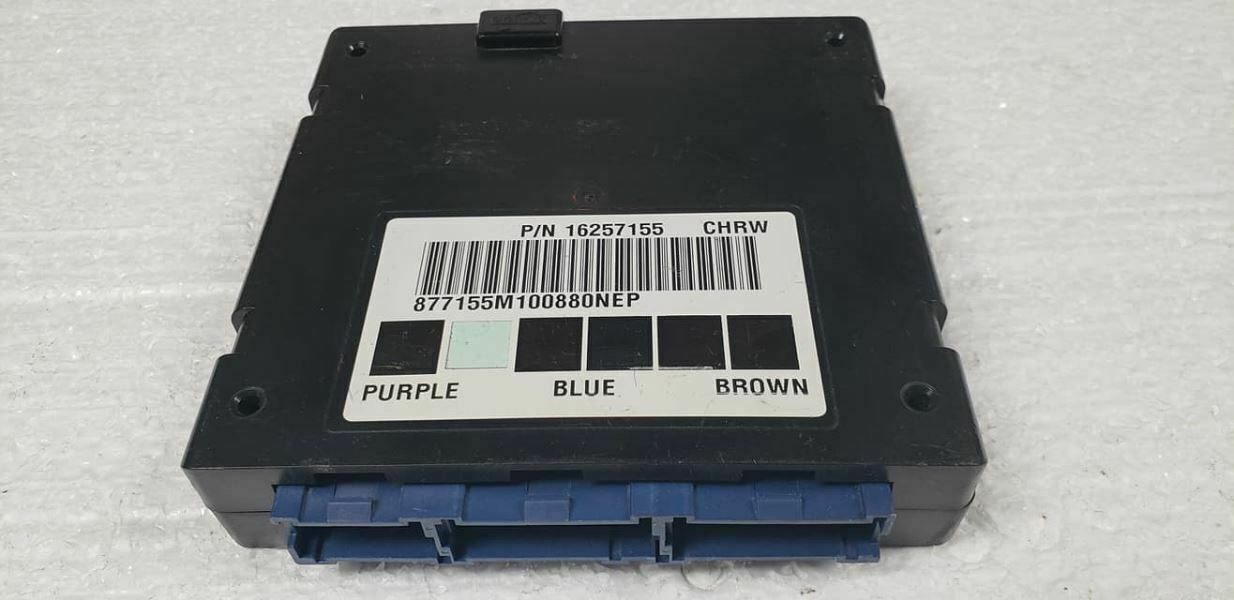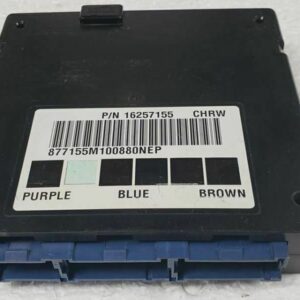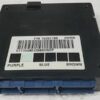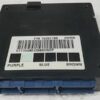Restore Your Truck’s Electrical System with a Plug-and-Play Solution
Are you battling frustrating electrical gremlins in your 2000 GM truck or SUV? Flickering lights, malfunctioning power windows, a security system that acts on its own, or an intermittent no-start condition are all classic signs of a failing Body Control Module (BCM). As a technician with over two decades of experience, I’ve seen how a faulty BCM can turn a reliable vehicle into a source of constant headaches. It’s the central command center for your vehicle’s body electronics, and when it fails, chaos ensues. This isn’t just an inconvenience; it can be a safety issue when interior lights or power locks don’t work as expected.
This replacement Body Control Module is the definitive fix for these problems. What sets this part apart is our professional programming service. Before we ship it, we flash the module with the latest GM software updates, specifically matched to your vehicle using your VIN. This eliminates the need for an expensive trip to the dealership and the use of specialized scan tools for programming. You get a part that is truly ready for installation, saving you significant time and money. A properly functioning 2000 Suburban 2500 BCM is essential for restoring the comfort and safety features you rely on every day.
From the Diagnostic Bay
A customer brought in his 2000 Yukon XL last month with a truly bizarre set of symptoms. The radio would turn on and off by itself, the dome lights would flicker while driving, and occasionally the security light would flash, preventing the truck from starting. He had already replaced the battery and checked the main grounds. After connecting my diagnostic tool, I saw multiple communication loss codes with various modules. This pointed directly to the BCM. Instead of a lengthy and costly diagnostic and programming session at the dealer, we ordered one of these VIN-programmed modules. The installation took less than an hour, and it immediately solved every single electrical issue. The customer was thrilled to have his reliable truck back without the dealership hassle.
Common Signs of a Failing BCM
If your vehicle is experiencing any of the following, a faulty BCM is the likely culprit. Replacing your 2000 Suburban 2500 BCM can resolve these issues:
- ✔ Erratic or non-functional power windows, door locks, and mirrors.
- ✔ Interior or exterior lights that flicker, stay on, or don’t turn on at all.
- ✔ The security system engaging randomly, causing a no-start condition.
- ✔ The horn honking unexpectedly or not working when pressed.
- ✔ Inaccurate or dead gauges on the instrument cluster.
- ✔ Warning lights, such as the airbag light, staying illuminated for no reason.
A Straightforward Guide to BCM Replacement
Installing your new BCM is a manageable job for a DIYer with basic tools. Following these steps will ensure a smooth process. Remember to perform the post-installation procedures noted below.
- Safety First: Disconnect the negative terminal from your vehicle’s battery to prevent any electrical shorts.
- Locate the BCM: On these GM models, the BCM is typically located under the driver’s side of the dashboard, to the left of the steering column. You may need to remove a lower dash panel for access.
- Disconnect and Remove: Carefully unplug the electrical connectors from the old module. They have locking tabs that need to be depressed. Once disconnected, unbolt or unclip the old BCM from its mounting bracket.
- Install the New Module: Mount your new, pre-programmed BCM onto the bracket and securely plug in all the electrical connectors. Ensure they click into place.
- Reconnect and Test: Reinstall any dash panels you removed. Reconnect the negative battery terminal. Turn the key to the ‘On’ position and test all body functions—windows, locks, lights, etc.
Critical Post-Installation Steps
After installing your new BCM, two final procedures are often required to ensure full system functionality and safety. These steps require a professional-grade diagnostic tool.
- Airbag System Reset: To clear the airbag warning light, you must perform the ‘Setup SDM Primary Key in BCM’ procedure. This re-establishes communication between the new BCM and the airbag system’s Sensing and Diagnostic Module (SDM).
- Brake Pedal Position Sensor Relearn: Some vehicles may require the Brake Pedal Position (BPP) sensor to be recalibrated. This ensures the brake lights and stability control system receive accurate input from the pedal.
Verified Compatibility for Your GM SUV
This module is a direct-fit replacement for several GM models, provided the original part ID is 9377486. It is also a compatible replacement for part numbers 16257155, 15136876, and 09377486.
- Chevrolet Suburban 1500 & 2500 (2000)
- Chevrolet Tahoe (2000)
- GMC Yukon (2000, excluding Denali)
- GMC Yukon XL 1500 & 2500 (2000)
Frequently Asked Questions
Why do you need my VIN number?
We require your Vehicle Identification Number (VIN) to program the BCM with the correct software and vehicle-specific options for your truck. This ensures all features work correctly right out of the box, just like a part from the factory.
Is this a difficult part to install myself?
The physical replacement is straightforward for most DIYers. It involves removing a dash panel and swapping the module. However, post-installation procedures like the airbag system reset require a diagnostic tool, which you may need a professional mechanic to perform.
Will this fix my ‘Service Airbag’ light?
If the light is on due to a faulty BCM, yes. After installation, the ‘Setup SDM Primary Key in BCM’ procedure must be performed with a scan tool to clear the light and ensure the system is operational.
What happens if I don’t provide a VIN?
We cannot ship the module without a VIN. The programming is essential for the part to function in your vehicle. The order will be held until a valid VIN is provided.
Is this the correct part for my 2000 GMC Yukon Denali?
No, the fitment data specifies this part is for the 2000 GMC Yukon *excluding* the Denali trim. The Denali model uses a different BCM due to its unique features.
What tools are needed for the post-installation steps?
You will need a bi-directional diagnostic scan tool, such as a GM Tech 2 or a high-end professional scanner from brands like Autel or Snap-on. Basic code readers cannot perform these specific relearn and setup procedures.



